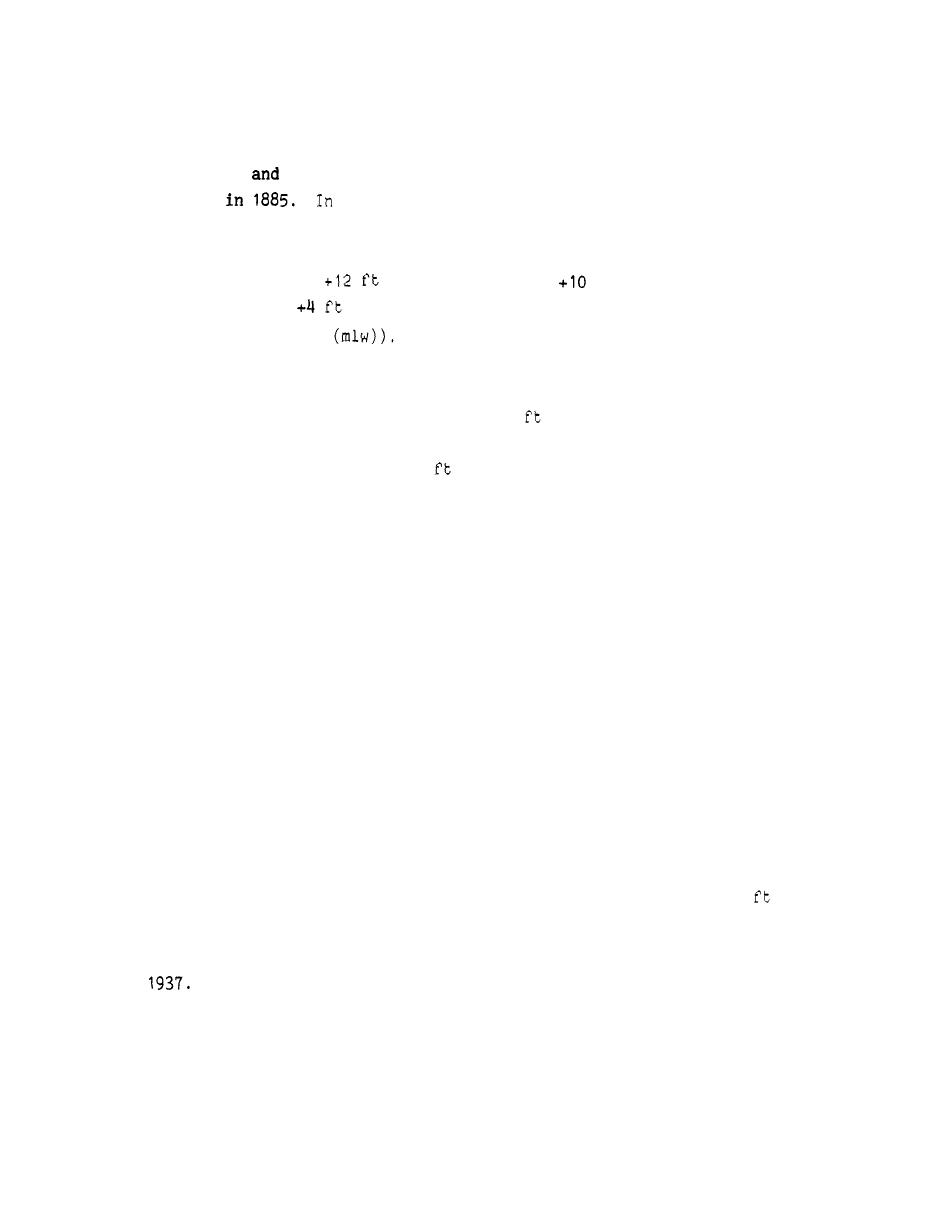
I
for improvement of conditions at the mouth of the river. The report, sub-
mitted in 1882, recommended a jetty extending from the shore near Fort Stevens
(on Point Adams) in a northwest direction toward a point 3 miles south of Cape
possibly a jetty on Peacock Spit. Construction on the
Disappointment
jetty began
1893 a board of engineers was convened t o determine
the effects of the work and recommend any changes. The board recommended that
four groins be constructed on the north side of the jetty and that the jetty
at shore, slope to
be raised to elevation
ft at 1.125 miles from
at the outer end (all elevations referenced to a
shore, and slope to
datum of mean low water
The total length of the south jetty was
4.5 miles. All recommendations were adopted, and the south jetty was com-
pleted in 1895. The jetty was rubble mound and built from trestle work.
66. In 1889 the channel depth was -20
mllw and had a bearing west of
south. With the construction of the south jetty, the channel shifted to due
west and increased in depth to -31
mllw by 1895. The channel depth re-
mained -30 ft mllw in 1896 and 1897 and then started to decrease as the
channel continued to shift to the north. By 1902, the channel ran almost due
north and was at -22 ft mllw, while two new channels with about the same depth
had formed in the western section of the bar.
67. A new study of the mouth of the river was authorized in 1899. The
engineers conducting the study submitted their report in 1903, and they recom-
mended extending the south jetty due west for 2.5 miles, constructing a north
jetty from Cape Disappointment to a point 2 miles north of the outer end of
the 2.5-mile extension to the south jetty, and dredging.
68. The extension of the south jetty was begun in 1903 and completed
in 1913. Wave action prevented repair operations by floating plant, so no
maintenance was done until the amount of work needed could justify the cost
of the trestle and plant. By 1931 the jetty had been lowered to about mean
low water. The jetty was restored, except f o r the outer 3,300 ft, between
1931 and 1936, using 2,200,000 tons of stone. Wave action then started
destroying the end face, causing the superstructure to ravel back 300
or
more during a normal winter season. The outer end was therefore impregnated
with 12,737 tons of a mixture of 18 percent asphalt and 82 percent beach sand
The asphalt failed to secure the end of the jetty, and a concrete
in
terminal was constructed above the low water level during 1941 to 1942. The
concrete terminal was about 3,900 ft shoreward from the end of the original
24



 Previous Page
Previous Page
